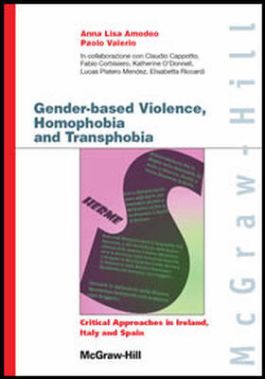GENDER-BASED VIOLENCES,HOMOPHOBIA AND TRANSPHOBIA
1. Gender Based Violence: reflections on the borderline between psychoanalysis and humanities
2. Intersectional Identities and Differing Responses to Gender-based Violence on the Island of Ireland
3. Stigma and violence within the gender system: learning of normative models and resilience strategies
4. (Em)Powering Woman: new approaches to individual psychological well-being
5. Perspectives, tools and methodologies to prevent and combat gender and homophobic violence: problems and resources picked out from the experience of Italian associations
6. “Hermes” interviews the First Responders: investigation on representations and emotional dimension of the operators of the women's crisis centres.
7. The integration between public and private actors in the management of the network of services for the LGBT population: constraints and opportunities.
8 .Homosexing... in The City. LGBT Communities and Rainbow Tourism
The volume collects the scientific contributions of those who participated at the European project “Hermes – Linking network to fight sexual and gender stigma”, co-financed by the European Community within the Daphne III Program. It was simultaneously carried out in Naples, Madrid and Dublin where partners worked for a common purpose of fighting homophobia and transphobia at different levels. The project was aimed at preventing different types of stigma related to gender and sexual orientation, implementing a network of NGOs and territorial Institutions and preventing violence against women and LGBT people through trainings and prevention interventions addressed to first responders and schools at risk. Due to the many objectives and activities carried out during the two-years project, it can represent an example of Good Practices to use for the prevention of sexual and gender stigma. To offer a complete perspective on these themes, this volume includes many papers belonging to different scientific disciplines, such as psychology, sociology, political sciences and gender and queer studies.

